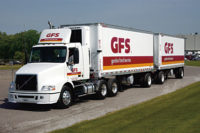The Predictive and Prescriptive Food Distribution Center

Keith Moore is CEO of AutoScheduler.AI.
Keith Moore
In this dynamic market, food businesses need innovative solutions that help them navigate their supply chains to overcome challenges brought on by the pandemic, such as supply and labor shortages, lack of truck drivers, and a squeeze on capacity. These challenges create a need to drive operational excellence inside distribution centers.
Many warehouses and distribution centers suffer from fragmented processes with operational decisions made by manual planners who rely heavily on tribal knowledge. Now is the time for food companies to use warehouse and distribution technologies that apply advanced artificial intelligence to visualize all operations at a distribution center and optimize labor, equipment, touches, and inventory to drive efficiencies.
Inside every distribution center, planners and administrative staff use all data available to manage shipping, receiving, dock schedules, inventory control, the release of work, and more. Distribution centers have complex tasks that need to be performed, and each one has a variety of constraints that need to be understood and balanced by the planning staff to get all the proper inventory out of the right door at the right time.
Distribution centers face constraints such as a specific number of dock doors, space restrictions, refrigeration guidelines for cold DCs and set schedules for fulfilling orders. DCs often have bottlenecks caused by these constraints, along with the lack of available labor. The challenge is that there are just too many decisions to be made without using technology.
It is imperative to automate all operational distribution decision-making in a capacity-considerate way. Food businesses need to use predictive and prescriptive warehouse planning solutions, combining data from various systems into a single operational plan that prescriptively orchestrates campus operations for optimized efficiency. This planning saves on indirect labor, increases fill rates, and improves productivity across direct labor.
The Predictive Warehouse
The first step is to view all real-time and planned activities. Data is taken from core execution systems and needs to be consolidated automatically. Data is pulled from Warehouse Management Systems, Yard Management Systems, Order Management Systems, Visibility Solutions, and Production Schedules and converged to provide a single, unified view.
This data convergence creates the foundation for warehouse intelligence. The next objective is to use the data to understand the operation’s current and future realities. It is essential first to predict what will happen and identify disruptions. These predictions can then be used to prevent disruptions altogether.
To predict the future, companies can leverage operational twin technology. This technology takes in the current state from multiple systems and what was initially planned by all site systems and plays the future forward based on known constraints.
For example: Say it is 11 a.m., and a site is trying to plan for the next shift. An autopilot planning system already knows the following information:
- An inbound expected at 10 a.m. still has not checked in at the gate.
- Production will be producing approximately 500 cases of Item ABCD at 2 p.m.
- There are 22 scheduled outbounds at 3 p.m. (18 drops, four live).
- Six are short inventory currently; two need inventory from the 10 a.m. that has not arrived.
- Two shipments could be fulfilled directly from the production line.
- One shipment has yet to be assigned a trailer, but there is a drop trailer in the yard waiting to be unloaded that could be reloaded for use.
- Three shipments require a case pick that has not started.
- There are 13 scheduled inbounds at 2:15 p.m.
- Seven of these have inventory that could be used for the outbounds at 3 p.m.
- There are only four unloaders, 12 loaders on duty, and two yard jockeys.
- There are only 12 dock doors available.
When faced with this situation, dynamic operational twin technology starts to play forward the scenario from the current time and predictively understands the breaking points. In this case, using a predictive operational twin lets management know that there is still a single shipment that will not go out on time in full due to missing inventory. Of equal importance, this operational twin is updated as conditions change, ensuring that workers operate off the latest reality.
Knowing the breaking points of a process is helpful, but an optimized plan tells distribution managers how to put all the pieces together to keep all the other shipments from having issues.
The Prescriptive Warehouse
With a prescriptive warehouse, food distributors create optimal schedules for everyone involved in the operation. The prescriptive warehouse rearranges the picking schedule and changes dock times while still meeting carrier pickup times to ensure all shipments are made without inventory cuts. All the crews work off a single playbook, which factors in capacities will simultaneously create opportunities for activities like cross-docks, minimizing touches, and ensuring all orders get out on time and in full.
This playbook shows pickers what they need to do, loader and unloaders their ideal tasks, and tells dock schedulers and yard jockeys how to execute work optimally. Because disruptions like carriers missing appointments happen frequently, a prescriptive warehouse re-optimizes plans to ensure everybody is working off the best schedule.
A prescriptive warehouse is possible when food distributors use solutions that include complex mathematics and optimization techniques on the operational twin to determine what is likely to work most efficiently with the capacity in place. Because the algorithms consider all the items that administrative staff usually juggle, the prescriptive solution can fully orchestrate all activities to ensure all work gets completed – on time and in full.
Keith Moore is CEO of AutoScheduler.AI, a supply chain analytics company focused on distribution center optimization that accelerates existing WMS capabilities with Intelligent Warehouse Orchestration.
Looking for a reprint of this article?
From high-res PDFs to custom plaques, order your copy today!





